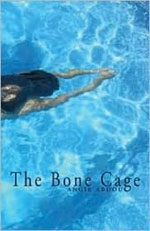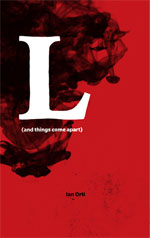
Dangerously dedicating oneself, body and soul – two contrasting views of elite performance in Black Swan and The Bone Cage
‘Tis the season for awards buzz that sparks as one year wanes, and blazes into the new year. In the movie realm, Black Swan is igniting that Academy Award spark. The movie is a psychological thriller about a young ballerina sacrificing and striving for the pinnacle role of her profession. On another level, the story of actress Natalie Portman’s physical and mental dedication to making the role authentically her own has been intriguing and even inspiring. As reviewer Roger Ebert observed:“The tragedy of Nina, and of many young performers and athletes, is that perfection in one area of life has led to sacrifices in many of the others. At a young age, everything becomes focused on pleasing someone (a parent, a coach, a partner), and somehow it gets wired in that the person can never be pleased. One becomes perfect in every area except for life itself.”(1)
‘Tis also the season for continued buzz in the Canadian literary realm – a buzz that revs up for the fall literary awards – and it’s fair to say that buzz is just as intoxicating for many as the Oscars. Really. Intriguingly, there are some striking parallels between Black Swan and one of the Canada Reads contenders.
The Bone Cage by Angie Abdou is about young and not-so-young elite athletes striving for their own pinnacle, a place on the Canadian Olympic team. The story is traced compellingly through the alternating and eventually intersecting trajectories of speed swimmer Sadie and wrestler Tom (Digger to family, friends and teammates). Abdou draws persuasively on her own competitive sports background (she swims at the Masters level, her brother was an Olympic wrestler) to build as convincing and approachable a story as Black Swan is fascinating but utterly rarified. Black Swan unfolds against a stark black and white backdrop, splashed with highly symbolic pink and blood red, and keeps up that striking visual assault from beginning to end. The Bone Cage uses different and instantly more pervasive sensory cues, where the book’s pages seem almost redolent of sweat and chlorine from the outset. From the beginning, Abdou takes you under the skin of her singular characters and taps into how they’re feeling in every sense of the word, from the physical satisfactions and strains to the emotional exhilaration and tribulations. From the beginning, you take in the flesh of the dancers in Black Swan, both at its most beautiful and at its most damaged and grotesque, and you see their conflicts, but it’s all surface. While this is perhaps comparing apples and oranges, it could also be said this is a fair contrasting of the accessibility of the storytelling and believable forging of the characters in the two works, regardless of the medium. Black Swan is gorgeously, frostily played out at arm’s length, whereas The Bone Cage draws you in warmly. Ebert’s observation about Black Swan points out that the elite performer strives to please, and notable in that comment is that the performer doesn’t seem to have the actual support, emotional or otherwise, of others. Nina literally and/or figuratively (really, it’s hard to tell – this is a psychological thriller and so I don’t think this is a spoiler) kills off everyone who could possibly offer her solace and support in her quest, not only making her victory her own in the end, but making it *exclusively* her own. In vivid contrast, The Bone Cage delves deeply and convincingly into the team dynamics, friendships and family relationships that do inspire the athletes to please, but even more, provide the athletes with invaluable safety nets on many levels. In Black Swan, perhaps Barbara Hershey’s tragically botoxed face elicits some sympathy as Nina’s well-intentioned if claustrophobically supportive mother, but she can’t hold a candle to the earthy, flesh-and-blood presence of Sadie’s stalwart grandmother and Digger’s slightly embarrassing but steadfast father. It’s Sadie’s palpable connection to her grandmother that best captures the dichotomy of the body’s power and fragility, and serves as a harbinger of Sadie’s own unexpected confrontation with her physical, emotional and even spiritual limits. In Black Swan, bodily fragility or threats to bodily supremacy create downright horror, but the challenges Sadie, Digger and their respective teammates face are couched with depth, subtlety and resonances such that anyone, of whatever physical prowess, can feel some empathy. Both Black Swan and The Bone Cage explore the relationship between elite performers and their “shelf life” and constrained time in the spotlight, and their consciousness of being part of a competitive continuum of those preceding and following. And again, Black Swan‘s assessment of that reality is tinged with horror, while The Bone Cage confronts it, admittedly, with a mix of disdain, anxiety and resentment, but presents everyone on that continuum (such as Sadie’s predecessor Lucinda and heir apparent Katie) with subtlety and understanding. Both Black Swan and The Bone Cage make sorrowful classical references to the body as a type of prison to be transcended. The obvious foundation of Black Swan is the spell cast in Tchaikovsky’s Swan Lake – it’s integral to the story, it is the story. By contrast, one minor shortcoming of The Bone Cage (a multi-layered reference to battle armor in Beowulf) is that attempts to give the intersecting stories some additional heft with classical references feels uncomfortably tacked on rather than an organic part of an already impressive whole. The Browning, Yeats and even the Ethel Wilson references are all technically congruous with Sadie’s background, but they’re all rather superfluous and don’t really add to the richness of the story. Nor does the fleeting reference to Tom Buchanan add – well, what was it supposed to add to the ending of The Bone Cage? But before you can accuse Abdou of taking it all too seriously, she ends on a note that is both earthy and whimsical. I wish the same could be said for the end of Black Swan. Black Swan‘s Grand Guignol ending is chillingly drenched in perfection in every sense, and that perfection is explosive but also finite. You’ve been entertained, but you’re glad it’s over, and you feel no need to wonder about the obsessively dedicated ballerina you’ve observed with fascination, but have really not come to know. The Bone Cage‘s wistful ending is ambiguous, tinged with hope and various possibilities. You wonder what happens next for the young athletes. (Maybe Abdou will consider updating us at some point …?) Black Swan is a twisted confection, but The Bone Cage is the real deal. I would recommend both the movie and the book, truth be told. As I remarked to a friend recently, though, “I would recommend Black Swan … I just don’t know who I would recommend it to …” No such problem with The Bone Cage. I would recommend it, too, and unreservedly to anyone who enjoys a good, engaging story with believable characters that either welcomes you with credibility and authenticity to a world you might know, or introduces you unthreateningly to a world you might not. Notes: 1. Black Swan review by Roger Eberthttp://rogerebert.suntimes.com/apps/pbcs.dll/article?AID=/20101201/REVIEWS/101209994

